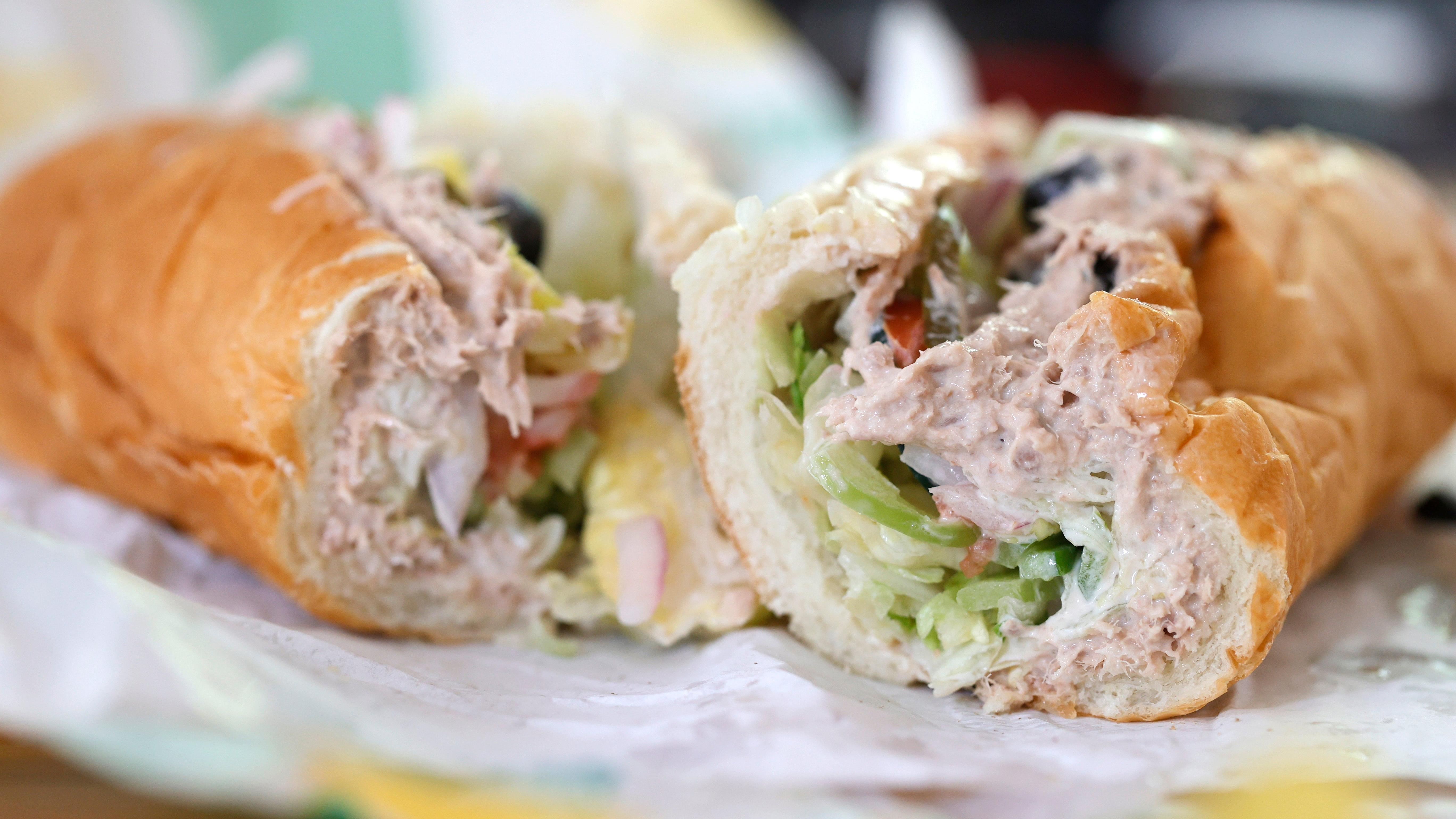What Subway's Tuna Lawsuit Can Teach Us About Fish
Subway isn’t the only place where the tuna might be more than just tuna.
A U.S. judge recently ruled to allow Subway to be sued over its claim that its tuna offering is "100% tuna." According to the complaints of the lawsuit and independent lab results, Subway's tuna sandwiches allegedly contain pork, chicken, and possibly no traces of tuna DNA at all.
As we've all come to know, nothing in the fast food world is ever 100% anything. But should the same disclaimer be applied to other commercial foods? If Subway's tuna sandwich filling is not made of 100% tuna as the chain claims, can we trust that other tuna products sold on grocery store shelves are fully tuna?
Why most tuna is not 100% pure tuna
Apologies to the tuna lovers out there who might already be aware of this fact. Double apologies to the tuna lovers who are not aware—sorry to break your fishy little hearts. But it turns out that most of the tuna sold in grocery stores and at restaurants in the United States is not, in fact, purely tuna.
The Atlantic reported in 2013 that nonprofit ocean protection group Oceana conducted genetic tests of 1,215 samples of fish from across the U.S. and found that 59% of the fish sold in restaurants and stores with the label "tuna" was not tuna. Plus, Subway may not be the only establishment misrepresenting its tuna. The same study from Oceana found that 74% of sushi venues mislabeled items as "tuna" when they were not, and all the samples from sushi restaurants in Chicago, Austin, New York, and Washington, DC were mislabeling tuna.
How commercial tuna is caught
How is it that other fish (or generally non-tuna seafood) might end up mixed in with canned, pouched, or otherwise packaged tuna products? The answer has a lot to do with how the tuna is caught.
The most common species of tuna sold in the U.S. are skipjack, albacore, yellowfin, bigeye, and bluefin. Subway's "responsible sourcing" page on its website says the brand only sells skipjack tuna in the United States. Smithsonian Magazine explains that one of the most sustainable methods for catching skipjack tuna is through a "pole and line" method: Each skipjack is caught one at a time by a crew of individual fishers on a boat. However, most tuna fisheries do not use this method. Instead, they end up with large by-catches of sharks, turtles, and other sea creatures through a method called purse seining, "an industrial fishing method in which dense schools of fish near the surface are encircled with a large net and scooped out of the ocean."
Once caught, the tuna must be cooked and processed for sale. Kevin McCay, COO of Safe Catch, a commercial tuna brand with an emphasis on sustainable practices, explains the typical industrial process.
"Conventional canned tuna is made by putting fish in large pre-cookers on open racks, machine-processing it, rehydrating the precooked tuna in the can, and cooking it a second time in the can," he says. "During the second cook process, the tuna is rehydrated by adding a liquid—often oil, water, or broth that can contain fillers, preservatives, or GMO ingredients." (This page has some info about Safe Catch's own labeling and transparency policies.)
Although Subway states that it is working with vendors and supports sustainable fishing practices, it is possible that (like many other commercially caught tuna) the skipjack added to Subway sandwiches is caught using the more popular purse seining method, which can lead to a mixture of seafood in each net.
We don't know for sure what Subway's process is, but it's safe to say that the brand is overconfident in its claim of "100% tuna." Wherever this lawsuit leads, Subway should probably alter the language on its labels.
